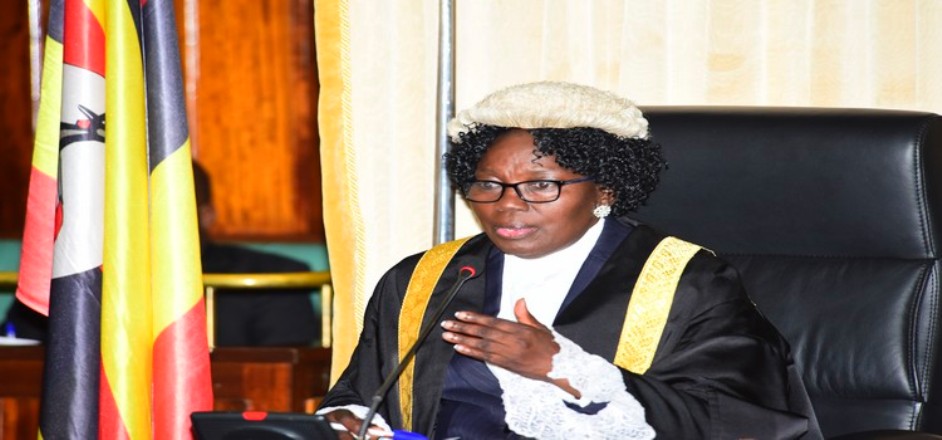State Minister For Energy, Opolot Okasai speaking at the opening of the 4th Annual National Content Conference which opened on Wednesday at Speke Resort Munyonyo.
The government will continue to explore oil and gas resources in the various basins of Uganda despite talks about the shift from fossil fuels.
State Minister for Energy, Okasai Opolot revealed that the ministry has declared two more basins to be opened for oil and gas exploration apart from the Albertine Graben Basin.
These include the Kadam Moroto Basin and the Lake Kyoga Basin in Northeast and Eastern Uganda.
“We are going to take exploration of those two basins concurrently. But we also have another third area which is the Hoima Basin. But we give priority to the first two,” said Okasai
The Kyoga Basin exploration is likely to cover most of the areas in Teso, parts of Lango, Busoga, and Buganda.
“We have declared them for exploration, we have submitted progress to Parliament and cabinet approved it for exploration.”
The Minister did not reveal when they plan to announce the next competitive bidding for exploration works and whether they will be extended to the new areas.
The last competitive round of bidding round that was announced in 2019 had two companies selected to undertake exploration in the Albertine. They include DGR Energy Turaco Uganda from Australia.
DGR Energy is to explore in Turaco Block While Uganda National Oil Company is to explore in Kasuruban oil and gas block in Western Uganda.
The award of exploration and the signing of the Production Sharing Agreements was concluded early this year.
Kasuruban block spans 1,285 sq kilometers in Buliisa, Hoima, and Masindi districts and is the biggest of the five blocks given out during the second licensing round which commenced in May 2019. Other exploration companies in the sector include Armour Energy Ltd (AEL), and Oranto Petroleum Ltd (OPL). Oranto is currently in talks with the Ministry of Energy to have its license extended.
Okasai Opolot said more oil is expected in the Albertine Graben where 6.5 Billion barrels of oil have so far been discovered 1.4 billion of which is recoverable. “These resources so far discovered are sufficient production of petroleum in our country,” said Okasai.
Currently, there are ongoing drilling works in the Tlienga and Kingfisher projects as they prepare for first oil towards the end of 2025. Construction of the East African Crude Oil Pipeline (EACOP) is expected to take off at the beginning of next year. While construction of the refinery is yet to take off after the expiry of the agreement with an American-led firm that had been awarded the deal.
Okasai was addressing the 4th Annual National Content Conference which opened on Wednesday at Speke Resort Munyonyo. The conference organized by the Petroleum Authority of Uganda is expected to provide an update on the developments that have taken place two years after the Final Investment Decision for the East Africa Crude Oil Pipeline (EACOP), Kingfisher, and Tilenga Tilenga projects.
Themed “Optimizing National Content in the Oil and Gas Sector, Two Years after FID” the conference will also provide a platform for the licensed oil companies, together with their contractors and subcontractors, to present the goods and services required by the sector, and for Ugandans and Ugandan enterprises to showcase their capacity and experience.
Uganda’s Energy Transition Plan launched in Dubai this week, to begin production from projects under development.
Oil production will reach around 250 kb/d by 2030, before declining by around 6% per year on average by 2050. In 2030, the Tilenga project will provide over 80% of total production, with the rest coming from the Kingfisher project.
Some development and economic analysts have warned that Uganda risks having its assets stranded if it does not move fast to get those oil and gas resources into actual products. Some have suggested that a transition into cleaner energy sources could render the ongoing development commercially unviable.
-URN





